(11477 products available)






































































































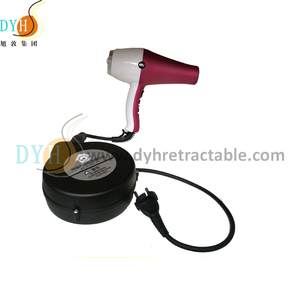

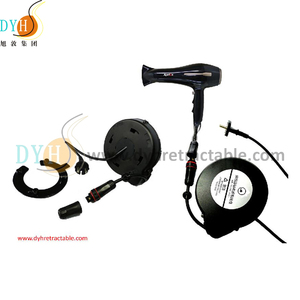


















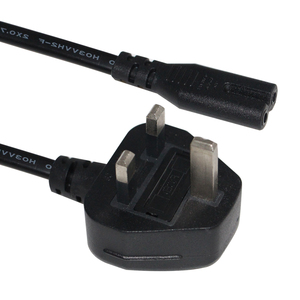

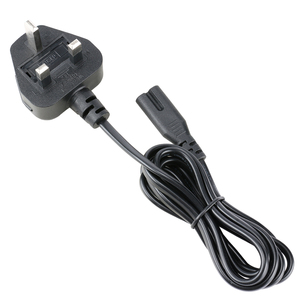




















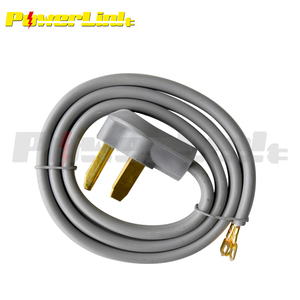




























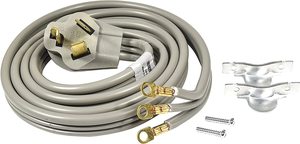









There are a variety of dryer cords, such as three-prong, four-prong, and heavy duty. Their difference is normally in the number of prongs and the voltage level. These variations ensure all cord types fulfil different needs and guarantee the appliance operates as efficiently and safely as possible.
The three-prong cord has two hot wires and one ground wire, providing a 120-volt or 240-volt connection, depending on the appliance. It's often used for older dryers that require less power due to their simpler design. The three-prong configuration facilitates easy connection to electrical systems. This is especially the case in homes that still have older wiring setups. While three-prong cords are suitable for these older models, modern safety standards recommend switching to a four-prong system for more secure grounding.
The four-prong cord includes two hot wires, one neutral, and one ground wire. This configuration supports a more safe 240-volt electrical setup. That's why it's typically required for modern electric dryers. The extra wire provides a separate ground pathway, which helps a potential fault current to safely divert to the ground rather than through the dryer casing. This helps reduce the risk of electric shock. Four-prong cords are useful in new home constructions since they comply with the latest National Electrical Code (NEC) requirements.
Heavy-duty cords are constructed to bear more loads. It can be a three- or four-prong, but one significant difference is that it's usually longer and made of thicker gauge wire. This provides additional durability and ensures that sufficient power reaches the dryer regardless of how far away the outlet is. Since it's designed for high loads, it's adequately employed in powerful commercial dryer models or in residential settings where the dryer is installed far from the electrical outlet.
Stripped away from its outer sheath, a cord's inner insulated conductors, or wires, are responsible for carrying electric current. Depending on the material composition, copper, CCAM, or aluminum alloy wires are best suited for these tasks. While these conductive materials are housed inside a tough rubber and vinyl sheath, the durability and flexibleness of each wire type can differ greatly, affecting a dryer cord's lifespan and risk of overheating during high loads.
Meanwhile, cords come in various gauge sizes. The lower the gauge number, the higher the number of wires. This means it can handle more electric currents. The most common dryer cord sizes are 10, 12, and 14-gauge. These cords are longer than they are wider to avoid overheating and are sturdy enough to last several hours of usage and years of wear.
However, factors like heat, friction, and even pests take a serious toll on the wires. Much like in a home's plumbing system where each pipe eventually has to be replaced, even the most durable dryer cords have a finite lifespan, on average around 10 to 15 years. With typical use, jaws of life cords can break down, leading to potential safety hazards from overheating, electric shock, or even fire if not replaced in good time.
Moreover, apart from the materials constituting the wires, the outer sheath also plays a notable role in the overall durability of a cord. For instance, heavy-duty vinyl or rubber cases provide more protection than standard lightweight ones. The cases also help guard against water or moisture exposure, which can unduly degrade the wires inside quicker than usual. Therefore, while the inner wires perform the electric work, a quality cord case can guarantee it runs safely for years under normal conditions without overheating or becoming loose due to wear and tear.
It isn't just the case of aesthetic quality, either. A good-quality dryer cord ensures proper, safe functioning and adds some significant monetary value. This is perhaps the only way to add a splash of colour and beautify this otherwise drab subject. When it comes to these cords, durability, quality, and even style—yes, style—count for a lot.
The right dryer cord makes all the difference in how well it performs. It's not just about picking one from the shelf; several factors merit attention when choosing a dryer cord. They include the dryer's power needs, gauge size, cord length, and more. These accessories help make sure laundry days always go smoothly.
The outer sheath of the cord is mainly composed of rubber or vinyl, while the inner conductive materials are copper, CCAM, or aluminum. While vinyl is cheaper, it wears out sooner and doesn't water-proof as well as rubber. Rubber is pricier but quite solid. It lasts longer, withstands high temperatures better, and keeps moisture at bay. CCAM, a blend of copper and aluminum, also costs less than pure copper but has a longer lifespan than vinyl.
Dryers usually have three- or four-prong cords. A three-prong dryer cord has two hot wires and one ground wire. It uses a 120/240-volt power source. Only older, less powerful dryers can use this cord. It is more like an entry-level cord. A four-prong cord, on the other hand, has two hot wires, one neutral, and one ground wire. It has a more secure 240-volt electrical connection. Modern electric dryers, in particular, prefer this cord. They use more power, and the four-prong setup makes their operation safer.
Wire gauge size refers to the thickness of the wires inside the cord. Smaller numbers mean thicker wires. Thicker wires are better. They can carry more electricity. They operate dryers more safely. They keep the cord from overheating. Common gauge sizes for dryer cords are 10, 12, and 14. The 10-gauge wires are thickest. They are over longer distances. This makes them the safest option. The 14-gauge wires are thinnest. They wear out sooner, using less electricity.
Cords come in lengths from 3 to 12 feet. Longer cords tally more electric risks and costs. Shorter cords eliminate these, although they could prove more difficult. Measure the distance from the electrical outlet to the dry location. Choose a cord that fits this distance. Do not get one too long or short. A perfect-length cord maximizes safety, eases use, and cuts expense.
A1: Typically, a cord should be replaced every 10 to 15 years. However, replace it sooner if damage occurs.
A2: Copper, CCAM, or aluminum wires form the inside, while vinyl or rubber compose the outer sheath.
A3: The most common cord gauge sizes are 10, 12, and 14. The lower the number, the thicker the wire.
A4: The four-prong cord provides separate pathways for ground and neutral. This means that the four-prong cord improves safety by reducing the risk of electric shock.
A5: Proper usage and care will increase its lifespan. These include routine inspections for wear, avoiding excessive pulling, and ensuring a proper electrical connection.